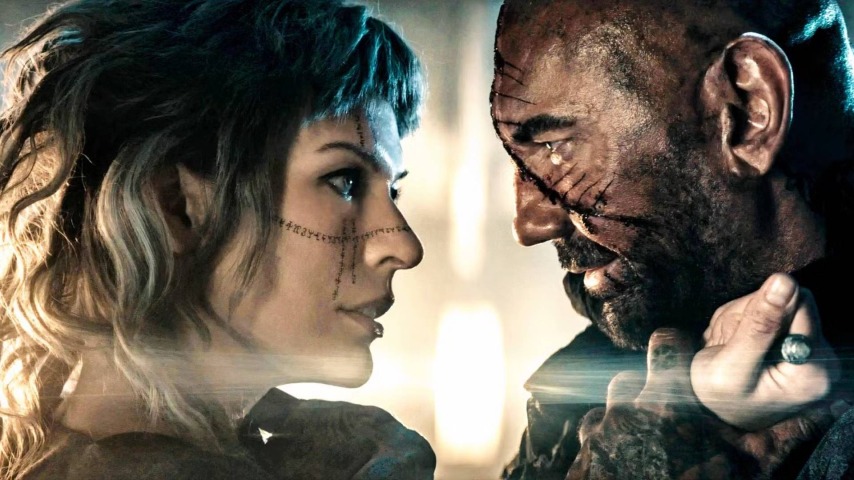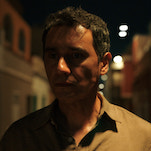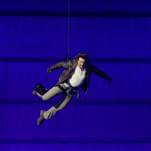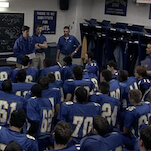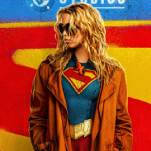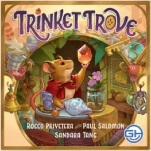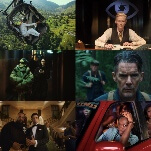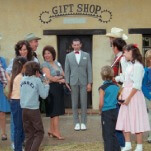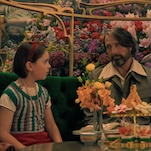Paul W.S. Anderson’s fantasy action flick In The Lost Lands has all the hallmarks of the pulpy B-movie maestro’s now-decades-old Resident Evil formula: ruins and industrial backdrops; loud electronic beats; maps, traps, and monsters; slow-mo and the familiar sight of Milla Jovovich floating with a weapon in each hand. Once again, we find ourselves in some kind of post-apocalyptic wasteland—in this case, a bleak neo-medieval future where most of what’s left of the human race now resides in The City Under The Mountain, a squalid metropolis ruled by a decrepit, incontinent king and an authoritarian Church. Beyond that lie the Lost Lands of the title: classic “There be dragons” territory, a sprawl of collapsed cities and abandoned power stations full of supernatural dangers and beasties. So far, so good.
Jovovich, the director’s off-screen spouse and on-screen muse, plays Gray Alys, an appropriately ageless witch with a reputation for granting wishes and never turning down a request (a dangerous combination). The scheming queen of the City Under The Mountain comes to her seeking “the secret of shape-shifting,” so Alys (pronounced like “Alice,” the name of Jovovich’s Resident Evil heroine) sets off into the Lost Lands to find a werewolf and take his power, accompanied by Boyce (Dave Bautista), a beefy, Western-badass-type hired gun who, as a matter of coincidence, is secretly schtupping said queen. Pursuing them from aboard an infernal armored train are the zealots and expendable goons of the Church, who have some kind of plan to overthrow the monarchy and turn the City into an absolute theocracy. (Here, organized religion plays the role usually occupied by sinister corporations in the Anderson-verse.)
If the filmmaker’s cult favorite Event Horizon was a haunted-house-horror Solaris, then In The Lost Lands seems, at least in the early going, like his B-movie version of Stalker. (The grungy, sepia-tinted opening sequence, with lots of dripping water and industrial decay, feels like a conscious visual nod.) But though it’s served with Anderson’s usual brisk pacing and healthy mistrust of authority, the script (which was adapted from an old short story by George R.R. Martin) turns out to be one of his least compelling, with intentionally vague character motivations and a number of confused subplots. Constantin Werner’s dialogue—which in Anderson’s case can be usually clunky and cheesy, but still memorable in a sub-James-Cameron sort of way—is mostly laughable and filled with clumsy Ye-Olde-isms: “What say you?,” “What brings you to visit one like me?,” “Halt in the name of the Overlord!,” and so on. No one actually says “Hark!,” but they may as well have.
Here, the reader might be forgiven thinking that a critic complaining about script problems in a Paul W.S. Anderson movie feels like a serious case of Missing The Point. Yet part of what has made Anderson’s movies so fun to watch (and set them apart from a lot of genre fare in the same budget range) is the unlikely classical unity that their seemingly simplistic and derivative scripts can achieve in linking time, place, and action. While In The Lost Lands has many of the Anderson staples—a time limit (there’s six days until the next full moon), progress diagrammed via on-screen maps, unlikely allies trying to get from Point A to Point B—its generic wasteland setting and fetch-quest plot lack the compact scale of the cavernous and maze-like environments that provide the backdrops for so many of his more entertaining films.
It would be a stretch to say that most of those movies have much subtlety or subtext, but they at least have something going on under the surface. In The Lost Lands, however, feels superficial even by Anderson’s standards, leaning a little too heavily into his predilection for pastiche. There are throwaway references to Once Upon A Time In The West and Blade Runner (a particular Anderson favorite), and chase scenes that are obviously indebted to Mad Max: Fury Road, with the identical, war-painted Church goons as War Boys. The set pieces—usually one of Anderson’s strengths—are mostly underwhelming and repetitive, though a particular sequence involving a makeshift cable car probably sets a record for the number of times a lunging henchman ends up plummeting to his doom. Throughout, one is continually reminded of other, better movies—not least of all, the kind of eminently watchable genre films Anderson was producing at his peak.
Director: Paul W. S. Anderson
Writer: Constantin Werner
Starring: Dave Bautista, Milla Jovovich, Arly Jover
Release Date: March 7, 2025
